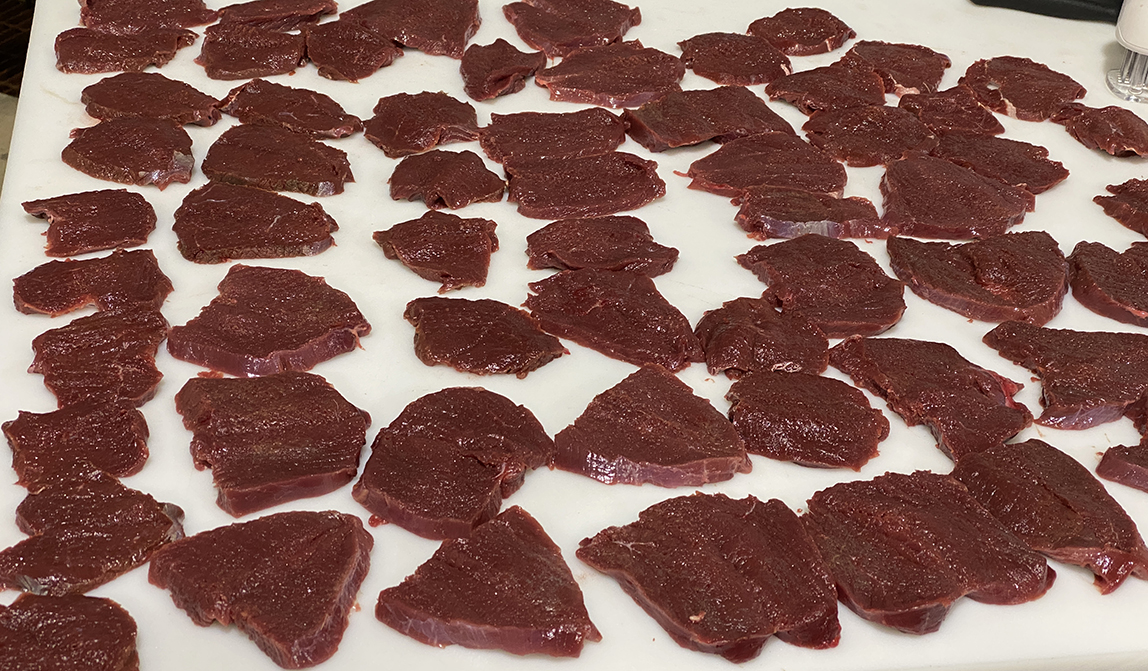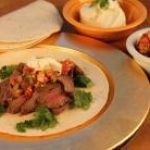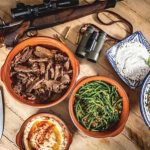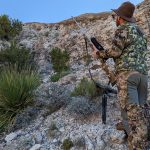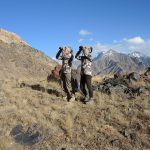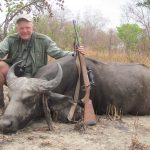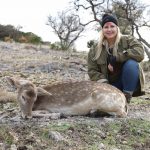Learn to process, preserve, and turn your wild game into gourmet meals.
The sun was just peeking over the West Texas horizon when I settled my cross hairs carefully just behind the shoulder of the mature whitetail doe and gently pressed the trigger. She ran just forty yards, and I found her piled up at the base of a live oak. I smiled as I laid my hand on her still-warm flank, thinking about what was to come.
On this day, the successful conclusion of my morning hunt did not mean a return to camp for a leisurely cup of coffee or a nap. I had completed the first step in the age-old process of turning a live game animal into edible meat, and I was about to work my way through every part of the procedure that would convert this doe into steaks, chops, and sausage–and eventually into gourmet meals, all under the expert tutelage of a professional chef.
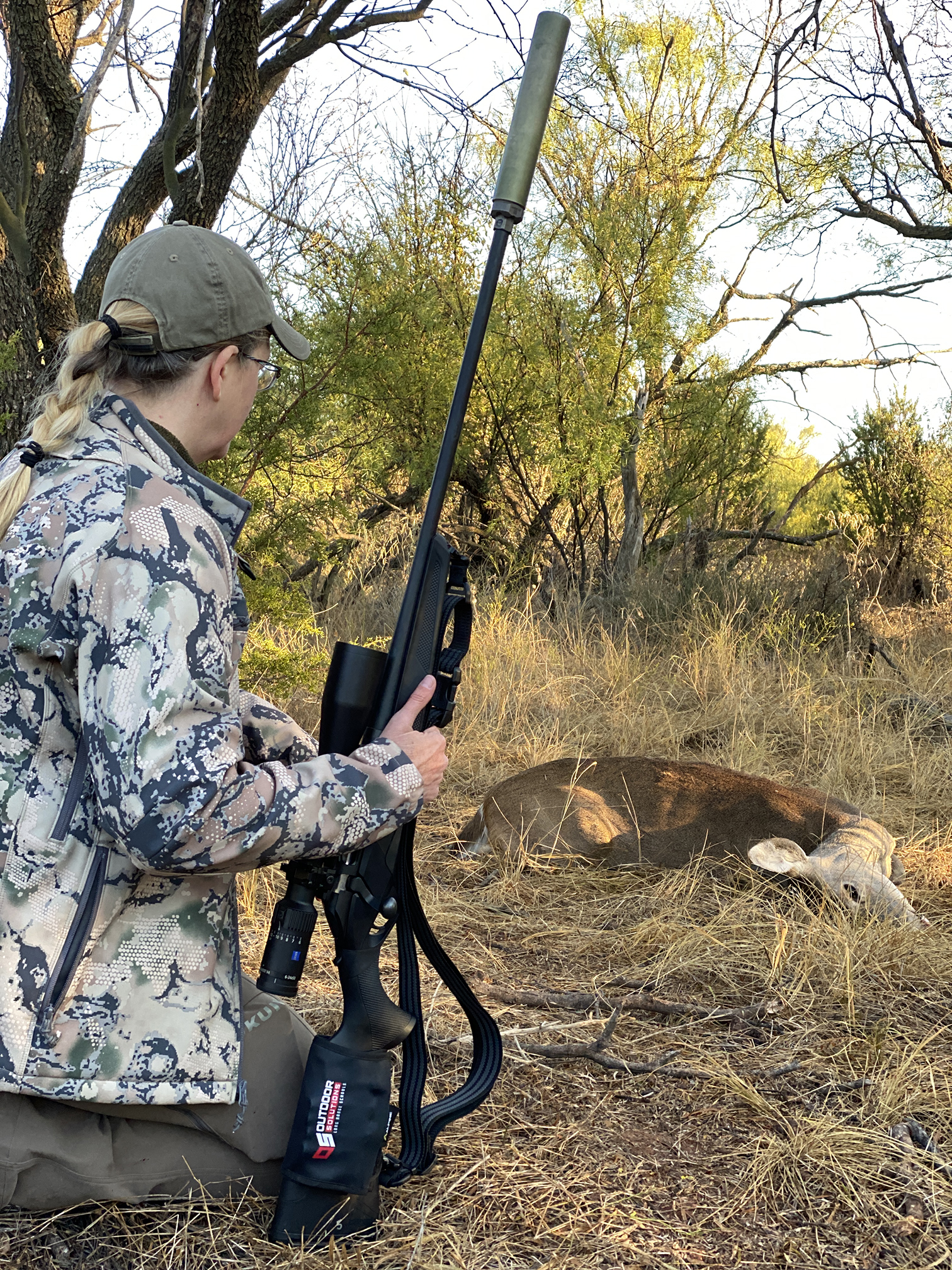
Sure, I had done this before—cutting up and preparing wild game has always been a cherished part of the hunt for me—but never under the guidance of someone who really knew what they were doing. I was eager to take my rather clumsy, self-taught butchering and game-cooking skills to the next level, and this From Field to Table event run by Outdoor Solutions at the T Diamond Ranch in Texas was the perfect place to do it.
The expert in charge of turning our group into competent wild game preparers was Albert Wutsch, a lifelong hunter, professional chef, and culinary instructor. Chef Al, as he likes to be called, served as chairman of the culinary department at Indiana University of Pennsylvania until retiring in 2015. He now lives in Montana, as befits someone who especially loves to hunt and eat elk, and he combines his hunting and cooking passions by running From Field to Table events.
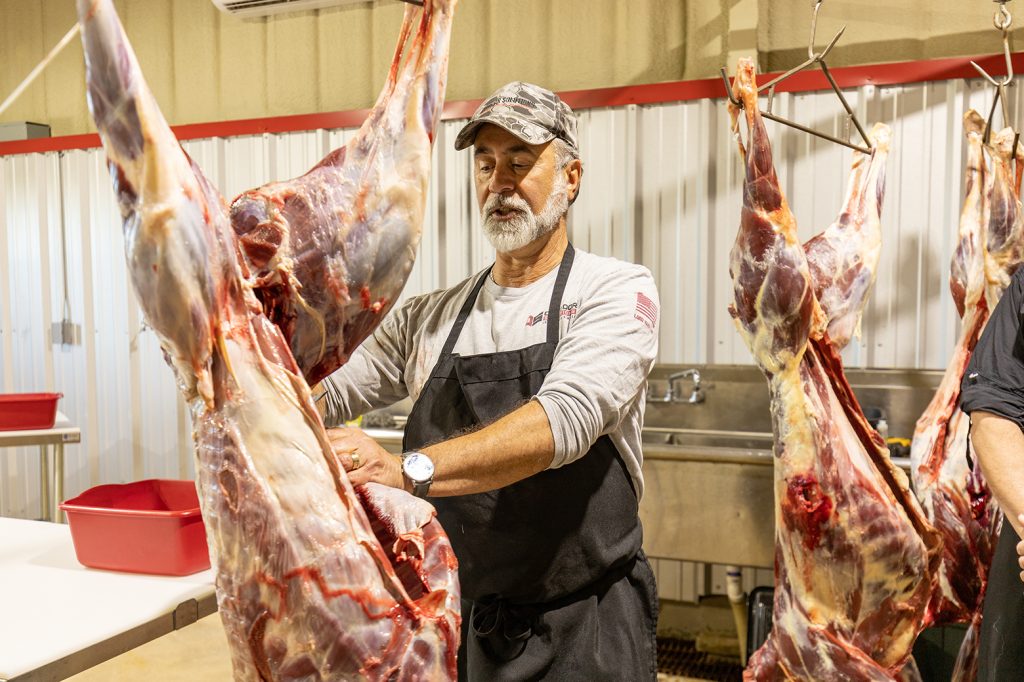
Anyone who values game meat is ultra-serious about proper field care, and Chef Al is no exception. “The object is to get the hide off and the body temperature down as fast as possible,” he said. I field-dressed my deer and hung it in the posh, and cool, butcher shop/classroom facility at the ranch headquarters. Once everyone in the class had at least one animal down, we skinned and quartered them as Chef Al walked us through the process and circulated among us with helpful suggestions.
“You don’t want to cut your animal up within the first 24 hours because you need to let the muscles relax,” he explained. “If you have the proper conditions for aging, which are temperatures between 34 and 45 degrees, go ahead and let it age for 5 to 7 days. But if you don’t have those conditions, don’t worry about aging. Just break it down and get the meat on ice or in the fridge to get it cooled down.”
The four-day course didn’t allow time to age our meat, so the next day we moved our deer quarters to large stainless-steel tables, where we followed along as Chef Al demonstrated how to bone them out and separate them into the various cuts, along with trimming and removing the excess fat and silver skin. He noted that all animals from elk to antelope break down in exactly the same way, so the process for my deer was the same as for the wild pig I shot the following day.
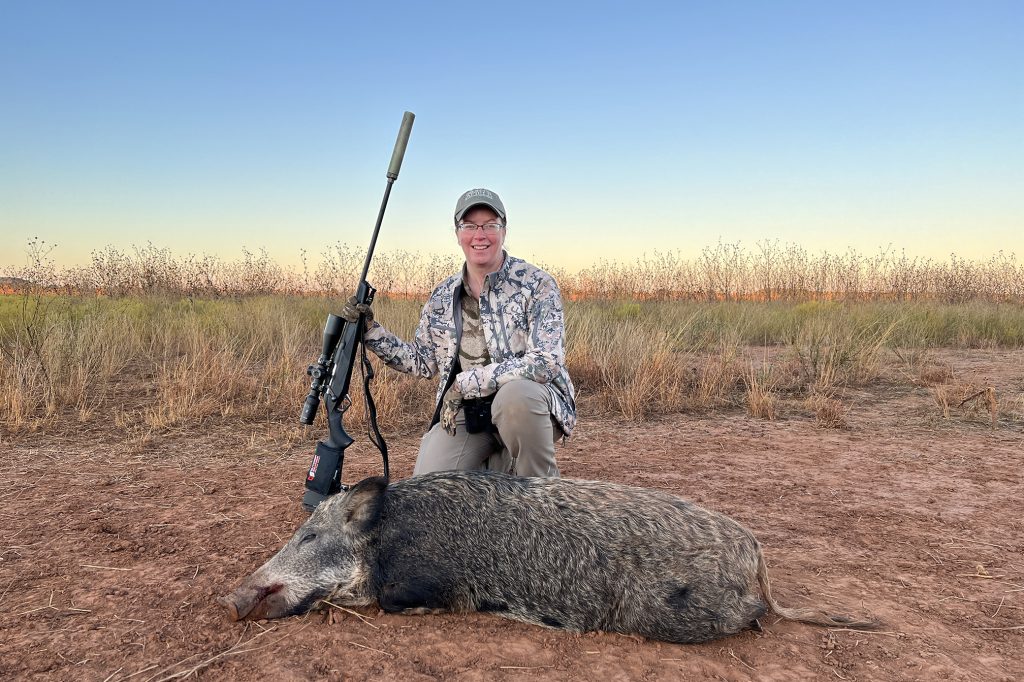
“As a chef, I’m already thinking of what I’m going to do with this carcass before I even go into the field,” Chef Al said. He showed us how to identify the various cuts of meat on each quarter, emphasizing the importance of knowing which ones were tender and which were tough. “The tender cuts always get dry cooking methods, and are always served rare, which means an internal temperature of 140 degrees. If you overcook tender cuts, they get chewy and tough. The tough cuts, on the other hand, should be cooked with slow, low cooking methods with moisture, for long periods of time, which breaks them down and makes them tender.”
With each quarter neatly boned out and separated into pieces, I carefully placed them into bags for vacuum sealing, marking each with a felt-tip marker: Top round (tender). Bottom round (tender). Eye of round (less tender). Shank (tough). Trimmings were placed in a separate bag for grinding or making stew meat. Each of us laid our sealed and labeled packages on the shelves of the shop’s freezer, reserving some of the meat for making sausage and the various courses that would later go into our wild-game dinner.
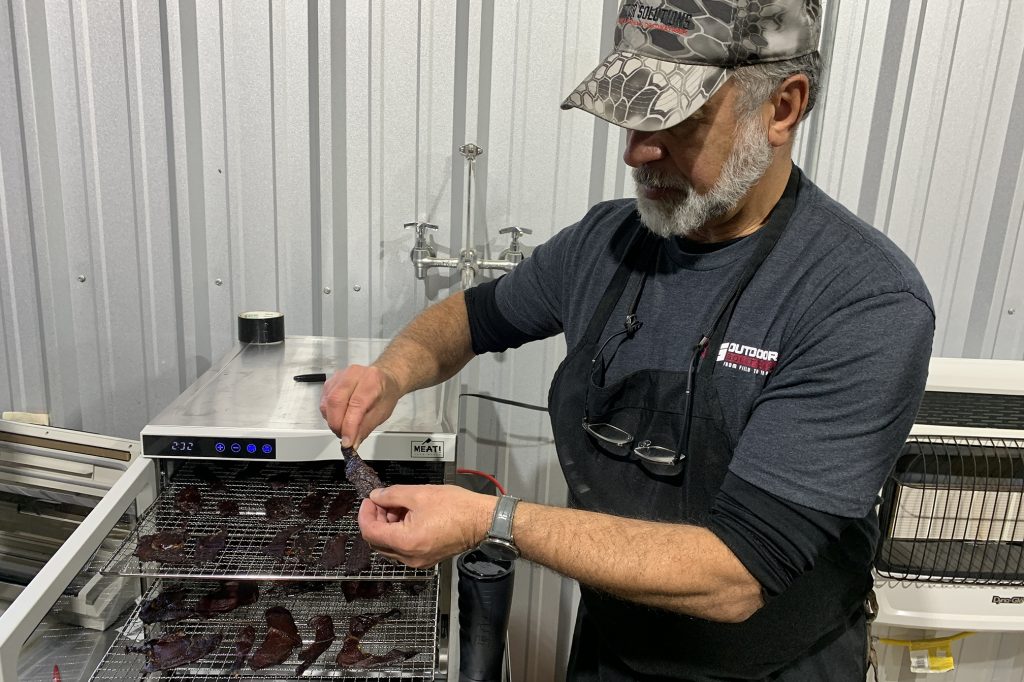
We enjoyed several morning and evening hunts on the ranch during the first three days of the course, which allowed us to shoot one deer and up to two pigs. I was content to shoot just one of each, which gave me plenty of meat to take home. We also spent some time at the range, where instructors helped students with shooting fundamentals and learning good field positions. The fourth and final day was spent entirely in the butcher shop and the kitchen, where we learned techniques for making sausage, brining and smoking meat, and making jerky. The day—and the event—culminated with our group preparing and serving a four-course gourmet wild game meal made with the deer and pigs we had hunted and processed.
As an experienced hunter, I was distinctly in the minority of our group. Of the ten attendees who had traveled to Texas from New York and California and various points in between, seven were first-time hunters.
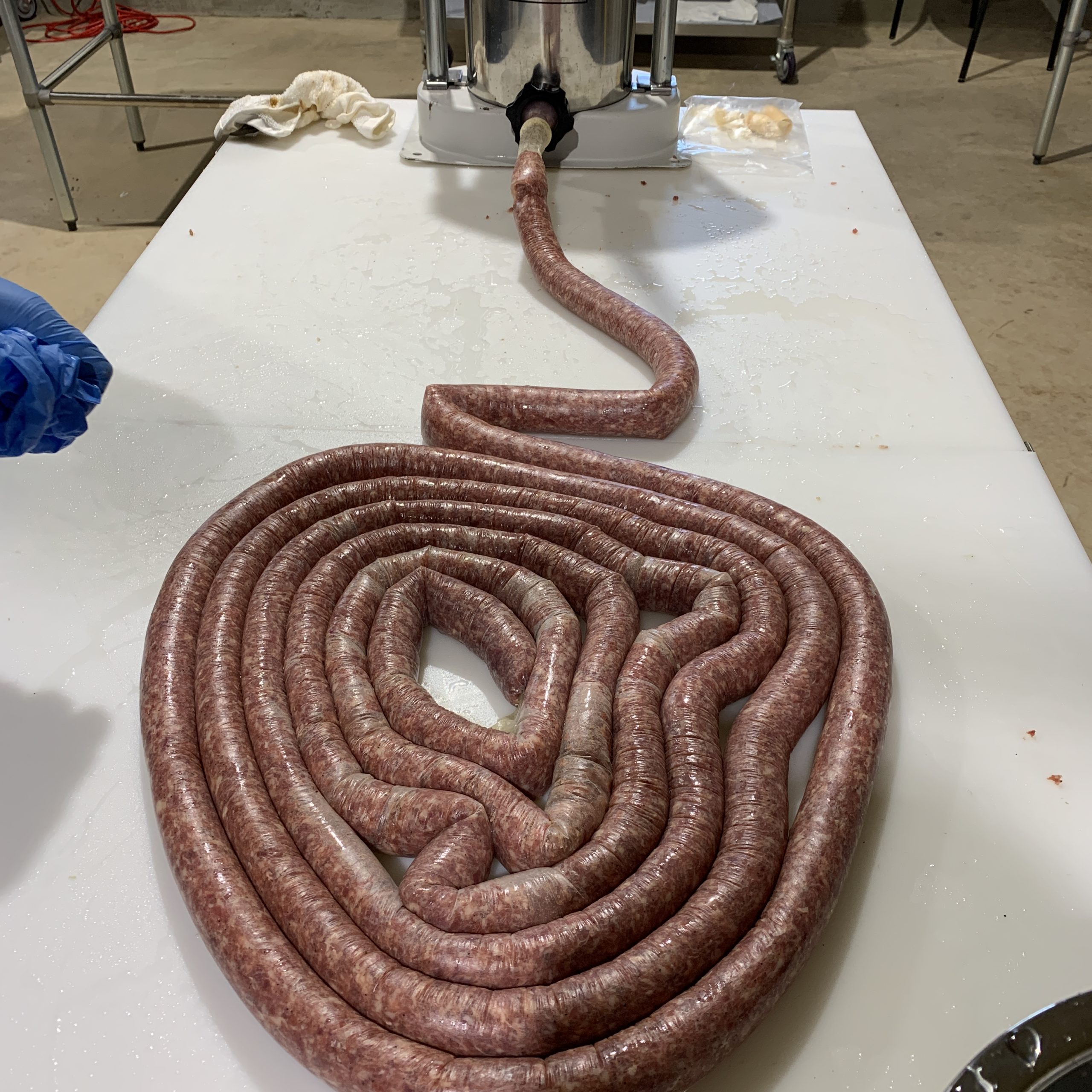
“The fact that these events have attracted so many new hunters comes as a surprise to me,” said Greg Ray, owner of Outdoor Solutions, the company behind From Field to Table. Outdoor Solutions began in 2003 as an outfitting and hunt-booking business. In 2012, after realizing that many hunters booking his Western hunts had never shot at an animal beyond 100 yards, Ray began running long-range shooting schools in different locations around the country, and the schools became a tremendous success. The From Field to Table events are the latest addition to the Outdoor Solutions educational offerings, started in 2019.
“Actually, I added the field-to-table classes to our lineup because I personally wanted to learn more about this aspect of hunting,” Ray explained. “I’ve been hunting all my life, but like many of us, I used to just drop off my animals at a commercial processor. Not only does that get expensive, but I gradually realized that I was missing an important part of the whole equation, the butchering and processing of the meat I had acquired. But I didn’t really know how to do it. I thought classes like these would appeal to other experienced hunters like myself who wanted to add to their skills.”
They did, but something else happened along the way: novice and first-time hunters began attending the From Field to Table classes in droves. In 2021, more than 50 percent of the students who attended the course were brand-new hunters, and interest continues to climb. Ray has fifteen classes running in 2022 in nine different locations throughout the country, and all but one were already sold out at press time.
“People who don’t fit the traditional hunting demographic are coming to these events,” Ray said. “And they turn into avid, dedicated hunters.”
One of the students in my class, Nick, was a perfect example. A self-described “left-leaning New Yorker who never hunted in my life,” Nick was invited to the event by his father-in-law, who is an avid hunter. Nick said he was very nervous about coming. “This is all totally out of my comfort zone,” he admitted. “I’ve never even been to Texas! But I do eat meat, and when my father-in-law invited me, I thought, I should do this. I should learn these skills and take personal responsibility for the meat I eat.”
I spoke to Nick on the last evening, and he said he could still hardly believe he had shot, skinned, and butchered both a deer and a pig that weekend, in addition to preparing one of the game dinner courses and learning how to make jerky and sausage. “I just had four of the best days I have ever had,” he said. “It was such a rewarding experience.”
In the kitchen on the last afternoon of the event, I was the one who felt like a complete novice. Faced not with preparing my usual venison stew or a simple pan-fried elk steak, I was instead staring down a complicated-looking recipe for venison char siu topped with wild boar won-tons served with hot Chinese mustard and Ponzu sauce. In other parts of the kitchen, my fellow students were working on an appetizer of corned boar and breakfast sausage topped by a poached egg, and others were preparing the main course, venison saltimbocca with mushroom marsala sauce. Chef Al moved from group to group, explaining various cooking techniques.
“We’ve got way too much oil in this pan!” he barked as he began a stir-frying demonstration. His tone softened a bit as he explained. “We don’t need much because it’s a nonstick pan. We want that flame up full blast, and we’ll start out with a little bit of meat in the pan. We’ll do this in a couple batches.” He expertly picked up the pan and flipped the strips of meat around. “We want it browned; we want carmelization. We’ll use some sauce here to coat that meat. Now we’re going to throw in some red peppers and snow peas.”
There was nothing to do but dive into my own cooking assignment and make the most of this one-of-a-kind learning experience. As I lifted a batch of steaming wild boar won-tons out of the deep fryer and placed them in a warming tray in preparation for serving, I started seeing the incredible possibilities, far beyond simple steaks and stews, represented by all the wild meat I was fortunate to have back home in my freezer.
“Center of the plate!” said Chef Al as he showed us how to properly present the first course. “This is what we want it to look like.” He sprinkled a serving of meat with just the right amount of cut chives and expertly placed baguette crisps standing up on three sides. “This is how you place the garnish. We want to showcase different colors, textures, flavors, and shapes. Draw a curved line with the sauce, like this. Leave plenty of space around the food. All right. Go for it!”
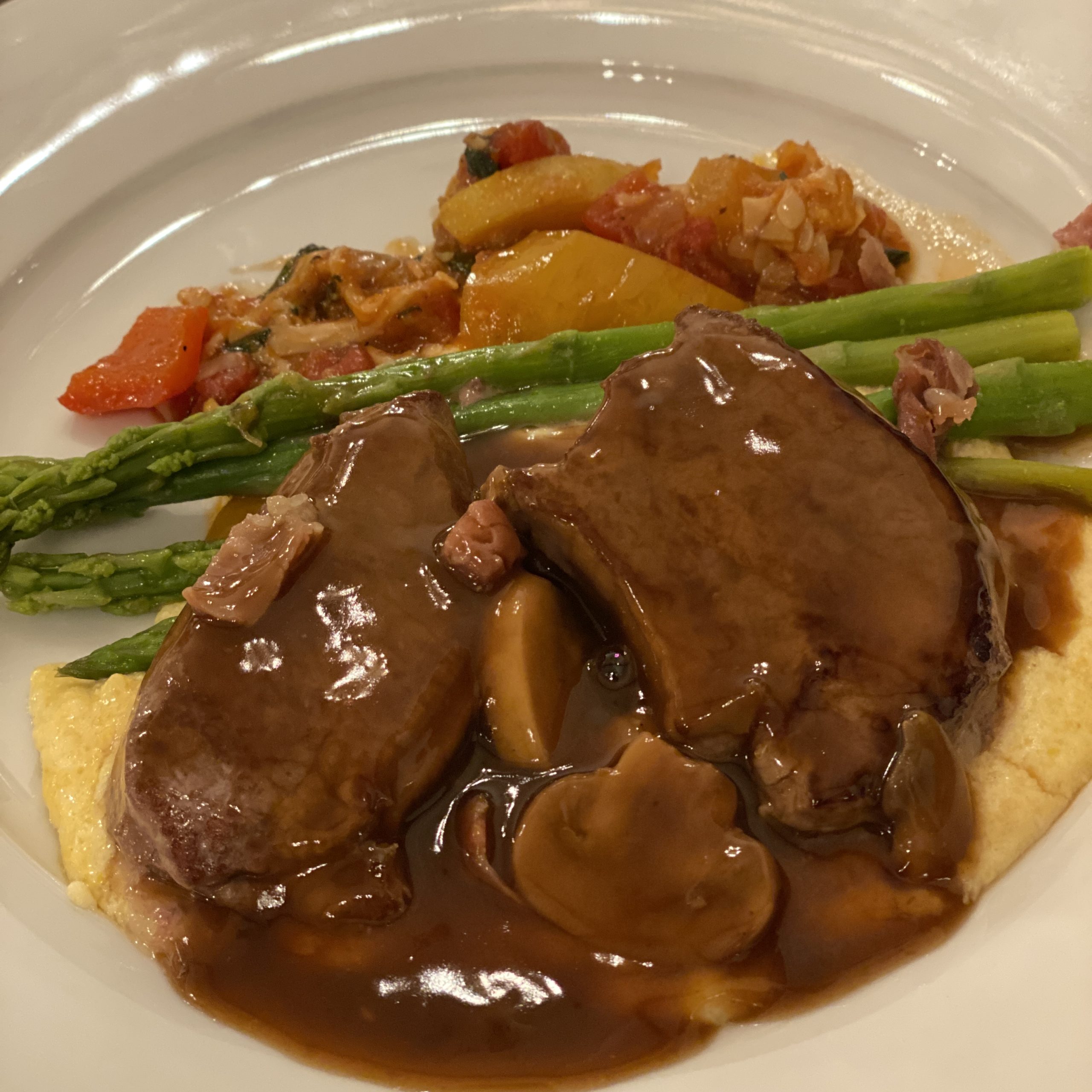
Thinking of my usual slap-some-food-on-a-plate-and-dig-in method, I could not help but grin as I attempted to get my baguette crisps to stand up straight. We hunters often forget that wild game is, and should be, considered a gourmet delicacy, and that the animals we hunt deserve the highest level of treatment and respect during every single step from the time we press the trigger to the time we present them on our plates. Once you attend a From Field to Table event, you’ll never forget that—and you’ll be well on your way to having the skills to do it, no matter your current level of hunting, meat processing, or cooking experience.
The best part of the event, of course, was eating the meal we had all worked so hard on. Sitting around the big dining table in the ranch lodge, we toasted each other on our newfound skills and enjoyed each course as it was prepared and plated. The experience had brought home to all of us the true essence and original intent of hunting—the procurement of meat, and the self-reliant joy of providing for ourselves and our families. And if I do say so myself, those won-tons were delicious.

To learn more about Outdoor Solutions From Field to Table events, go to fromfieldtotable.com. This website also has plenty of helpful information for game cooks, from processing videos to meat ID, cooking methods, and recipes.
GEAR:
On a From Field to Table event, you can use the supplied rifles or bring your own. I used the rig that Outdoor Solutions provided: a Benelli Lupo bolt-action rifle in 6.5 Creedmoor with suppressor, loaded with 140-grain Federal Fusion bonded softpoints and topped with a Zeiss Conquest scope. This proved to be an exceptionally accurate setup, and shooting the 6.5 Creedmoor with the suppressor was like plinking with a .22. Although we practiced reaching out to longer ranges and dialing the scope turrets on the range, most shots in the field were within 150 yards.
In the ranch butcher shop, we used grinders, dehydrators, meat mixers, sausage stuffers, and chamber vacuum sealers provided by MEAT! Your Maker, a direct-to-consumer company that boasts an entire line of meat-processing gear. I was so impressed with this equipment that as soon as I got home, I ordered a six-tray dehydrator and a meat slicer for my home butchering setup. You can see their entire line at meatyourmaker.com.

